Training aircraft and attack aircraft Embraer Tucano: 30 years in the ranks
EMB-312 Tucano
Training T-27 was developed as a specialized aircraft based on the platform EMB-312 Tucano ("Toucan)". The EMB-312 project started at the very beginning of 1978. It was supposed to create several types of aircraft for various purposes on the basis of a single design. From the outset, it was planned to develop and put in a series of training aircraft and light attack aircraft. Thus, one project could provide the solution of two tasks that arose before the Brazilian air forces.
Development of the new aircraft took relatively little time. Already in mid-August 1980, the first prototype of the EMB-312 aircraft took off for the first time. In December of the same year, a second prototype joined the flight tests. From August 1982, the third prototype was used in tests, which later became the benchmark for serial machines. At the end of September 83, Brazil adopted the first model of an aircraft based on EMB-312, the T-27 Tucano training aircraft, for its air force.
Taking into account the requirements for flight characteristics and special capabilities, the designers of Embraer performed the EMB-312 aircraft in a normal aerodynamic configuration with a straight low-wing. The power elements of the fuselage and the wing were made of aluminum alloys. The semi-monocoque fuselage had a length of 9,86 m and was divided into several parts. A Pratt Whitney Canada PT6A-25C hp 750 turboprop engine was placed in the forward part of it. The engine was equipped with a three-bladed propeller Hartzell HC-B3TN-3C / T10178-8R with an automatic system for changing the pitch and the possibility of reverse.
Immediately behind the engine compartment in the fuselage is located a relatively large two-seater cabin with a common lantern of a characteristic shape that flips to the right. To save the crew, the EMB-312 aircraft is equipped with two ejection seats Martin-Baker BR8LC. Behind the cockpit provides a small luggage compartment for the transport of necessary equipment. The volume of the compartment - 0,17 cube. meter
To the middle part of the fuselage, next to the cockpit, is attached a wing with a span of about 11,1 meters and an area of 19,4 square. The wing has a two-spar design. Power elements and plating are made of aluminum alloys. To increase the bearing characteristics of the wing profiles in the root and end parts are different. The wing mechanization consists of single-section flaps and ailerons with an electric control system. Inside the wing consoles are two fuel tanks with a total capacity of 694 liters. The fuel system of these tanks allows the aircraft to fly upside down for about 30 seconds.
The tail of the aircraft EMB-312 is made on a two-spar scheme with a caisson. All rudders have threshold compensation and are equipped with electric trimmers.
The aircraft is equipped with a three-bearing landing gear with a nose strut. All landing gear have one wheel each. The system of cleaning and release is hydraulic; if necessary, the crew can use a back-up mechanical one. The nose landing gear retracts into the fuselage by turning back, the main ones - into the wing, by turning in the direction of the fuselage. The main landing gear is equipped with hydraulic brakes, and the front is equipped with a vibration damper.
For the convenience of the crew, the aircraft is equipped with a freon air-conditioning system driven by an engine. In addition, there is a heated cabin and blowing windshield with air drawn from the engine. The oxygen system provides individual gas supply to both pilots. The supply of oxygen is stored in six tanks. For communication with the earth and flights in adverse weather conditions, EMB-312 received radio stations and a set of navigation equipment.
The EMB-312 aircraft turned out pretty light - its dry weight does not exceed 1870 kg. The normal take-off weight of a training aircraft is equal to 2550 kg, and with the maximum amount of fuel and full combat load, the take-off weight increases to 3200 kg. The 750-strong turboprop engine provides the aircraft with the characteristics necessary to perform the assigned tasks. The EMB-312 can accelerate to 448 km / h and has a cruising speed of 400-410 kilometers per hour. Such indicators of speed allow you to safely use the aircraft for the training of pilots, and are also suitable for solving problems of finding and destroying ground targets. The practical ceiling of the aircraft in both versions is equal to 9150 m, the practical range - over 1800 kilometers. With full refueling and outboard tanks, the fermentation range exceeds 3300 km.
The issue of using the EMB-312 as a light attack aircraft was resolved in an interesting way. To convert a training machine into a shock and vice versa, it is necessary to suspend or remove the necessary armament and carry out small preparatory work. So, the plane is equipped with a simple collimator sight in the cockpit. The combat load is placed on the four winged units, the normal load of each is 250 kg. EMB-312 aircraft in the attack version can use machine-gun containers, unguided rockets and bombs.
The first training version of the EMB-312 aircraft, called T-27, was launched. The Brazilian Air Force ordered 1983 aircraft of this modification in 133 year. Soon after, the first export contracts appeared. The T-27 Tucano aircraft got interested in Iraq and Egypt, which purchased 80 and 40 machines, respectively. In the future, Egypt placed an additional order for 14 aircraft. Due to the geographical and logistic features of the first export contracts, aircraft for Middle Eastern countries were built by the Egyptian firm AOI under a license with the support of Embraer.
In 1984, aircraft of the EMB-312 family were ordered by Venezuela and Honduras. The contracts included the delivery of an 31 aircraft for the Venezuelan Air Force and 12 vehicles for the Honduran military. Some Venezuelan Tucano aircraft received a new designation. Thus, the training was still called T-27, and the light attack aircraft were renamed A-27. In the future, EMB-312 aircraft of various modifications were built for Argentina, Iran, Colombia and other countries.
Of great interest is the contract signed in the mid-eighties. This agreement between Brazil and the United Kingdom implied licensed construction of Tucano aircraft on British manufacturing facilities owned by Short. Before signing the contract, Embraer and Short finalized the initial draft in accordance with the requirements of the customer represented by the British Air Force. First of all, a new Garrett TPE331-12B HP turboprop engine was installed. Due to this, the maximum speed of the aircraft reached 820 km / h, while cruising increased to 610 km / h. Other flight characteristics have changed slightly. The resulting S.510 Tucano, also known as Tucano TI, was put into service in the 312 year. 1988 machines of this type were built.
In the future, the Short company independently created two versions of an aircraft produced under a license. The first of these, the Tucano Mk.51, was intended for the Kenyan Air Force. This version differed from the basic aircraft in that it was possible to train pilots in the use of barrel weapons, unguided rockets and bombs. The Kenyan military ordered 12 aircraft of this type. Soon after them, Kuwait expressed its desire to purchase such training machines. The 16 airplanes of the Tucano Mk.52 version differed from the Kenyan equipment in the composition of the equipment.
We should also mention the contract 1993 of the year, according to which France received 50 aircraft in the version of EMB-312F. At the request of the customer, Embraer modified the aircraft, increasing the life of the airframe to 10 in thousands of hours and installing new radio-electronic equipment. The French side provided a number of systems that replaced the previously used ones. EMB-312F aircraft served in the French Air Force until the end of the last decade.
EMB-314 Super Tucano
In the early nineties, Embraer attempted to improve the EMB-312 aircraft and unlock its modernization potential. The EMB-312H Super Tucano project implied a number of important changes in the design and equipment of the aircraft, designed to significantly improve its flight and combat characteristics. In 1993, two prototypes of the new aircraft were built, which further demonstrated the correctness of the applied technical solutions.
The upgraded trainer or strike aircraft received a Pratt & Whitney Canada PT6A-68C turboprop engine with a capacity of 1600 hp. with a five-blade propeller, designed to provide higher performance for a heavier machine. The airframe design was significantly strengthened, its service life increased to 12-18 thousand hours. The cockpit received Kevlar protection and a number of new electronic equipment, including LCD screens. After such a re-equipment, the aircraft became longer by about one and a half meters longer (total length was 11,4 m), and also became much heavier. The empty weight of the Super Tucano aircraft is 3200 kilograms. The maximum take-off weight has grown to 5400 kg.
The maximum speed of the aircraft EMB-312H reached 590 km / h, cruising - 520 km / h. During normal refueling, the aircraft is able to travel over 1500 km, the fermentation range is about 2800 km.
With the modernization significantly improved the fighting qualities of the shock version of the aircraft. First of all, it should be noted that Super Tucano received two built-in FN M3P machine guns of 12,7 mm caliber in the wing root. The ammunition of each of them - 200 cartridges. On five nodes of the suspension (four underwing pylons and one node under the fuselage) a combat load with a total weight up to 1550 kg can be placed. The nomenclature of weapons suitable for use by the aircraft EMB-312H includes machine gun and cannon containers with weapons caliber from 7,62 to mm 20, guided and unmanaged bomb and missile weapons. For self-defense attack aircraft can carry guided air-to-air missiles. Thus, the new light attack aircraft, unlike the previous model Tucano, is capable of striking not only with unguided weapons, but also can destroy a wide range of targets, including fortifications, armored vehicles and front-line enemy aircraft.
By the time of the first orders, the EMB-312H project was renamed to EMB-314. In addition, by this time, two versions of the attack aircraft had been developed, differing from each other in some elements of the appearance. So, the A-29A aircraft is equipped with only one pilot's workplace and carries an extra fuel tank per 400 liters. Modification A-29B, like the previous aircraft of the Tucano family, has two pilot workstations, and in addition is equipped with various electronic equipment necessary to control the battlefield.
In 2001, Brazil was the starting customer for the Super Tucano aircraft. From the end of 2003 to the middle of 2012, 99 aircraft of the A-29A and A-29B versions were delivered to her. The Brazilian Air Force uses these aircraft to search for and, if necessary, destroy the drug cartels' vehicles. Quite often attack aircraft have to assume the functions of fighters and force aircraft to land with illegal cargo. In addition, the pilots of Super Tucano aircraft at the legislative level are entitled to shoot down smugglers.
In the mid-2000s, Colombia ordered the A-25B 29 aircraft. Machines were delivered in the coming years. The first case of the Colombian Super Tucano’s combat work occurred in January 2007, when the planes launched a missile-bombing attack on the “Revolutionary Armed Forces of Colombia” formation camp. In the future, the Colombian air force regularly used new attack aircraft to fight the rebels and drug trafficking.
To date, EMB-314 Super Tucano aircraft serve in the air forces of Angola, Brazil, Burkina Faso, Chile, Colombia, the Dominican Republic, Ecuador, Guatemala, etc. Of particular interest are the supply of these aircraft in the United States. In the middle of the last decade, a private military company, Blackwater Worldwide, acquired a Brazilian attack aircraft in a slightly modified configuration. In particular, it lacked built-in weapons. According to some reports, this aircraft was used in recent local conflicts. In 2008, another EMB-314 was acquired by the US Special Operations Command to explore its capabilities. After lengthy negotiations and disputes in February 2013, the United States and Embraer signed a contract according to which A-29 aircraft will be built under license in one of the American enterprises. The existing contract involves the construction of 20 attack aircraft, which in the future will be supported from the air by special units.
Currently, the Brazilian company Embraer is negotiating with several potential buyers. Aircraft EMB-314 Super Tucano interested in the Air Force of Afghanistan, Honduras, Paraguay and other countries. All these states intend to improve the capabilities of their strike aircraft through new relatively cheap Brazilian-made aircraft.
***
For three decades, during which Brazil and other countries built various planes of the Tucano family, almost a thousand cars of various modifications were produced. The total number of aircraft EMB-312 exceeded 650 units. British aircraft manufacturers built around Short Tucano training 150. Finally, over the past 10-12 years, Embraer has built and delivered Super Tucano aircraft to customers around 160-170. Most of the aircraft built is still in operation in several countries. In addition, the possible signing of new contracts allows us to talk about the imminent increase in the number of built aircraft of various modifications of the same family. Thus, the EMB-312 Tucano project is rightfully one of the most successful in stories Brazilian aircraft industry.
On the materials of the sites:
http://airwar.ru/
http://embraer.com.br/
http://flightglobal.com/
http://airforce-technology.com/
http://globalsecurity.org/
http://defense-update.com/
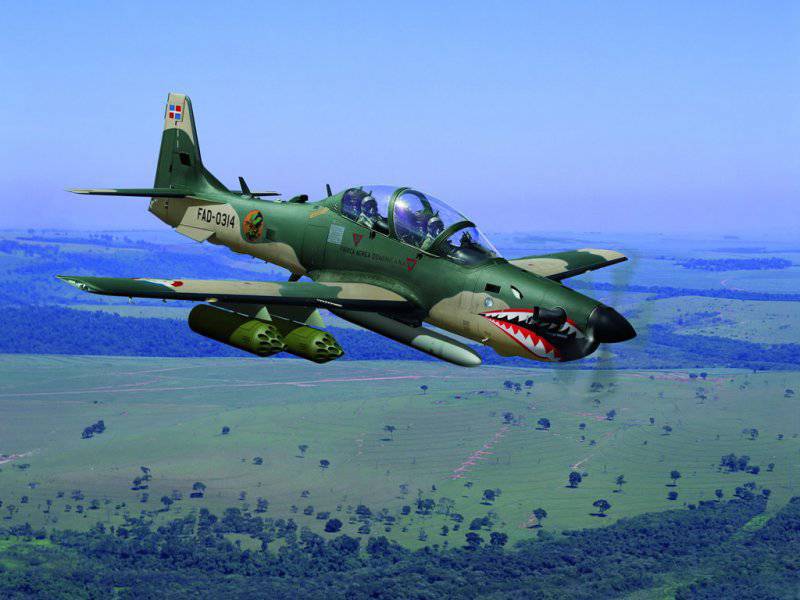
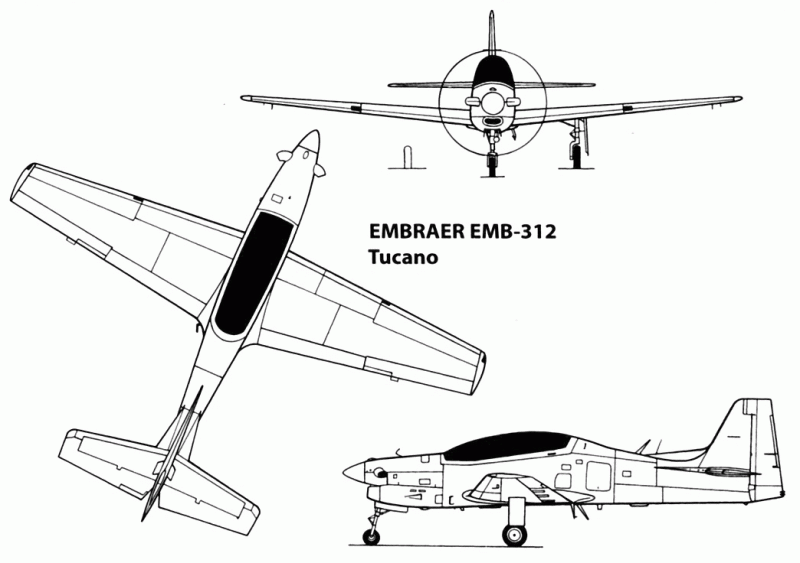
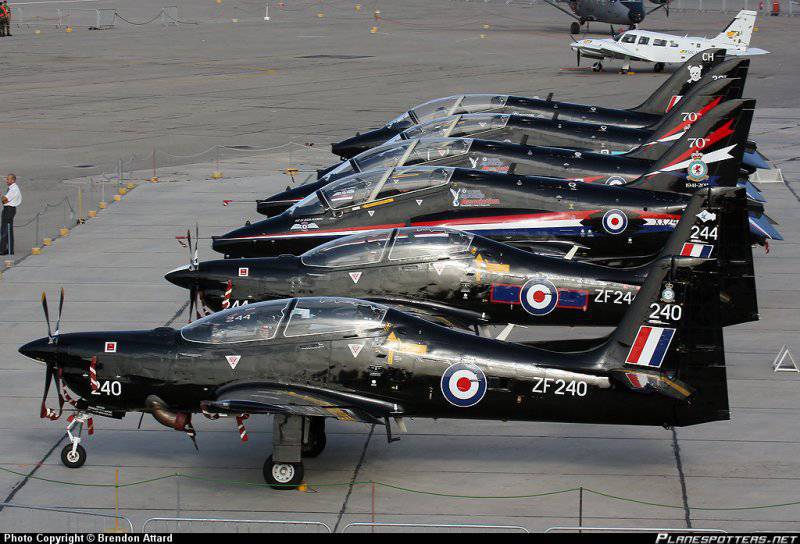
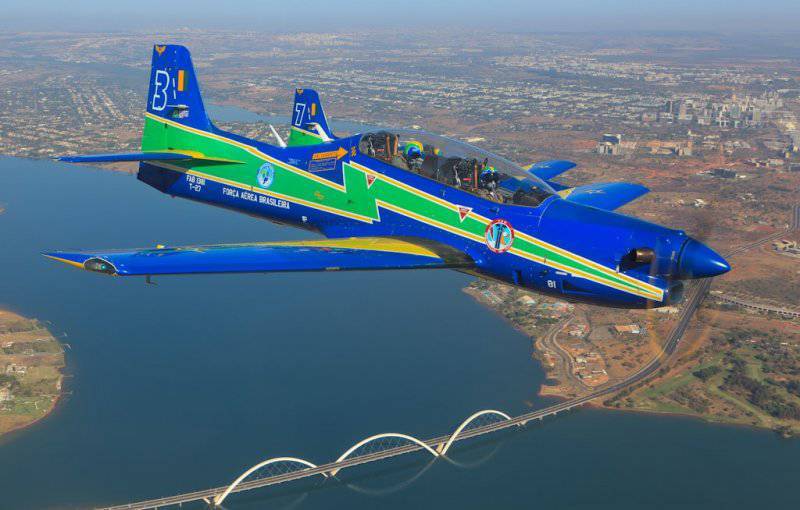
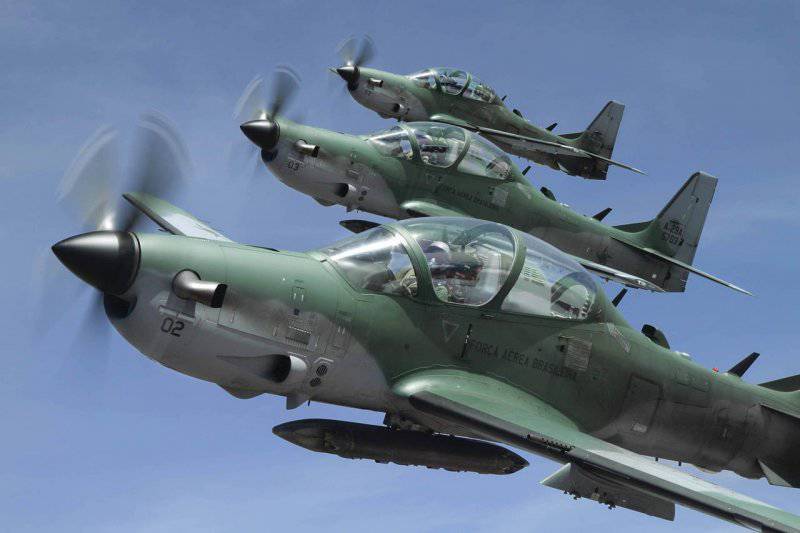
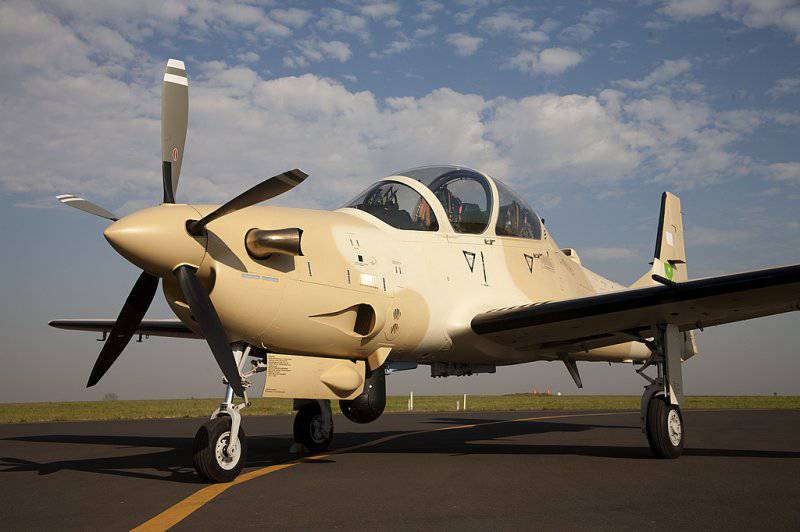
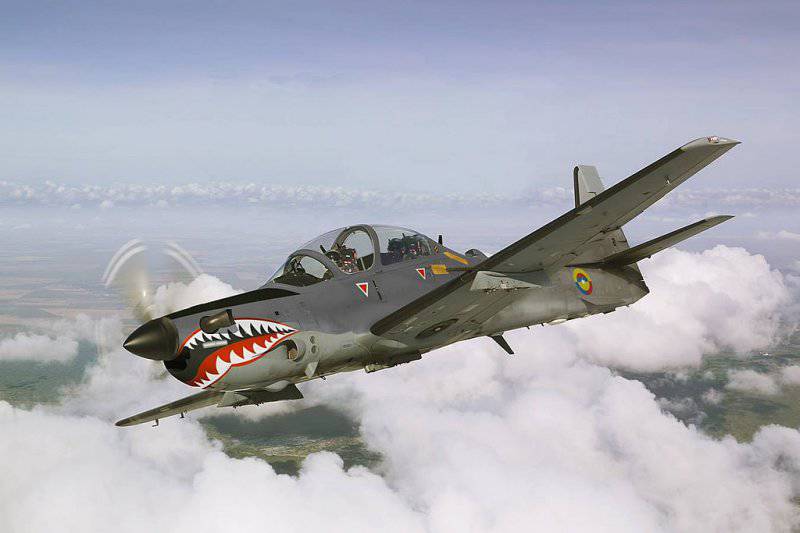
Information